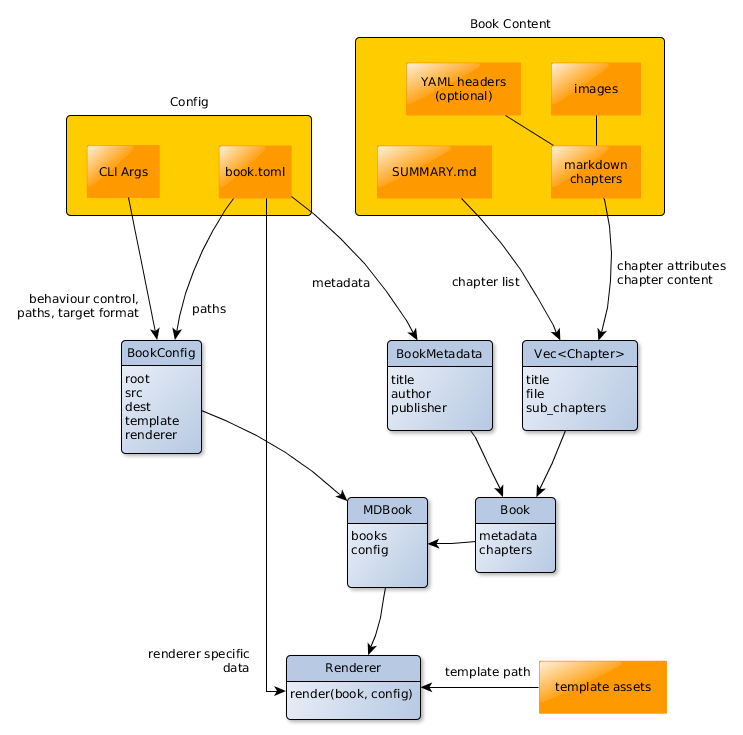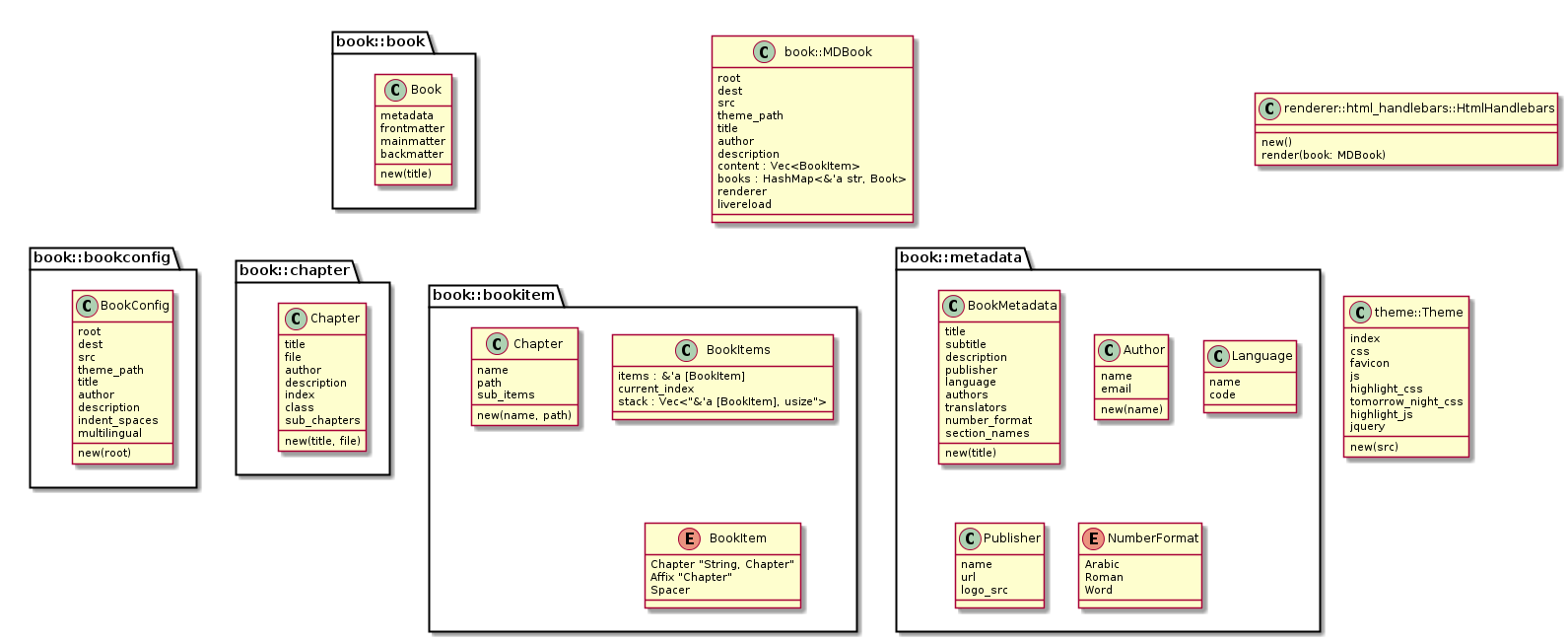2.1 KiB
Doc
Diagrams are with yEd and plantuml.
Data
Renderer
Takes data from:
- a book's metadata and chapters (
Book) - paths and behaviour config (
BookConfig) - template assets (
template_path)
For generating pages:
Book metadata, BookMetadata (title, author, publisher, etc.). Just recognize
those properties which can be easily anticipated.
If Renderer needs more specific data, it can be supplied in book.toml. It's
the Renderer's job to open that and parse it out.
Chapters, Vec<Chapter>.
If the user wants to store attributes that are not anticipated with structs, they can go in a hashmap with string keys, let them be accessible from the templates with helpers.
For generating output:
- template assets,
template-path, renderer does whatever it wants with it - config (root, dest, etc. folders)
Renderer is seleceted by CLI or default (html). Each book is passed to this renderer.
Config
Takes data from:
- CLI args
- book.json
Structs
Currently
Already almost good for implementing the above.
Storing data attributes can be reorganized.
Modules could be refactored to express intention more clearly.
Notes
There could be less modules. Merge modules which express one intention.
The two Chapter structs could be refactored out.
Take config paths for as many things as possible. Let the user organize their
project folder differently, or allow mdbook to function in existing projects
with already established folders.
Add config path for SUMMARY.md. Default is good to be in src/, it allows
chapter links to work when reading the file on Github.
The init command should copy the assets folder by default, it is better to make this choice for new users.
The specific assets (CSS, templates, etc.) are closely coupled with the book content when the user is writing it. If the templates change when mdbook develops, this changes the output in a way the user doesn't expect, maybe even breaking their book.

